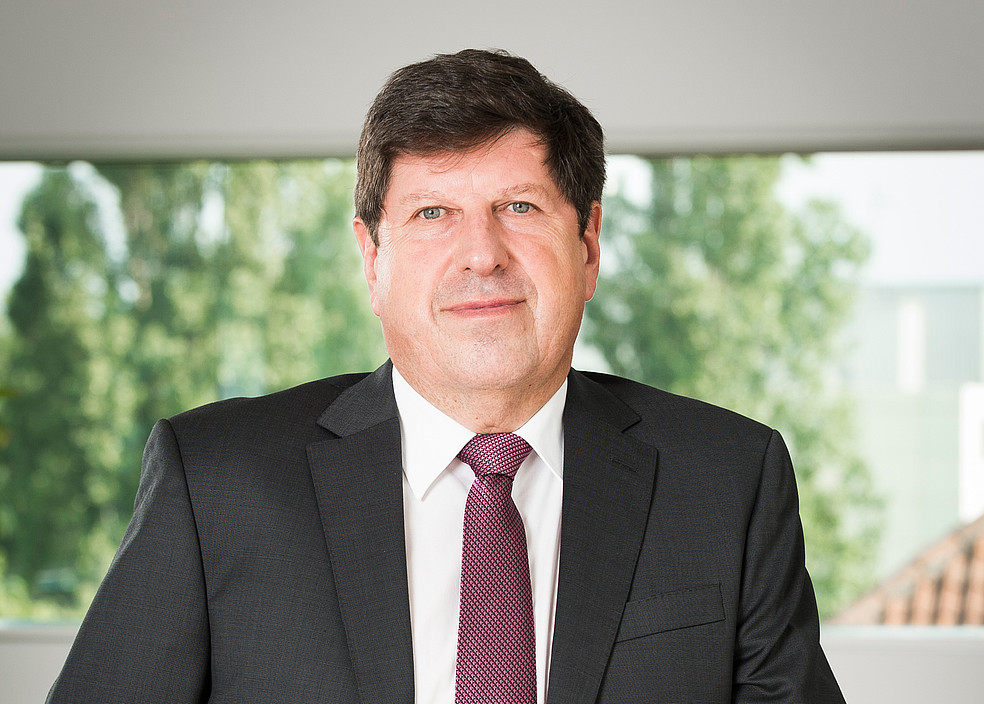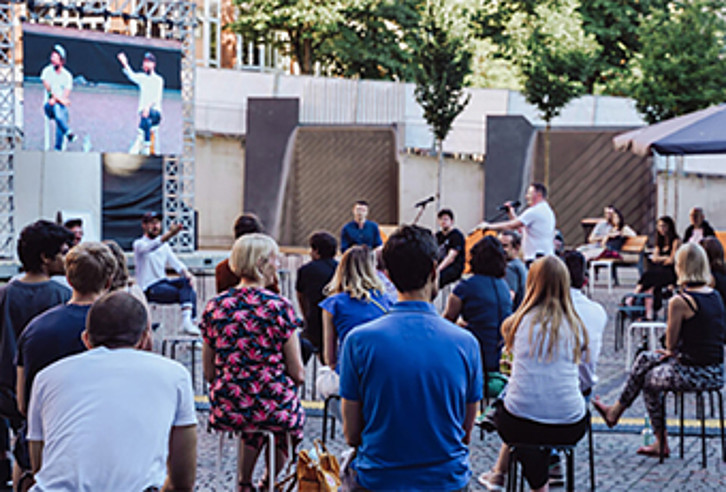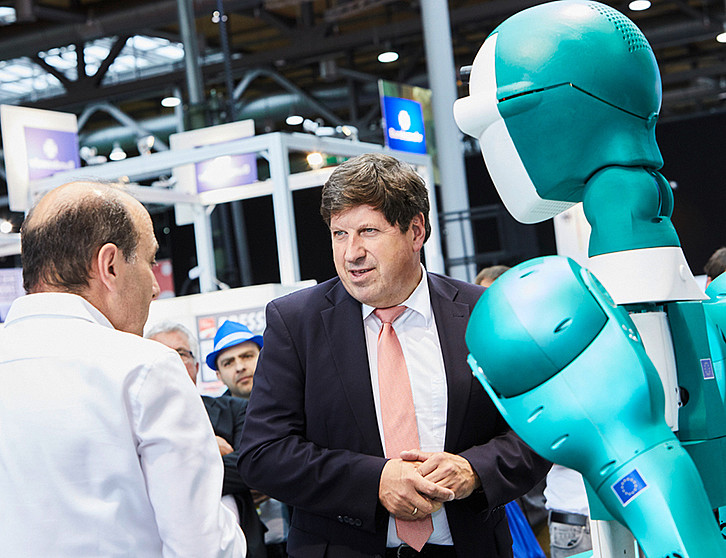Published on June 30, 2022
The great transformation

Professor Hirth, congratulations on your second term. Looking back on your first term of office at KIT: Which successes and experiences do you remember most?
Prof. Hirth: With the KIT Act and "Umbrella Strategy 2025", KIT has firmly anchored innovation as its third core task. With the innovation strategy adopted in 2017, we have further developed the innovation field of action over the past five years with concrete goals and measures. In the process, we have succeeded in launching strategic partnerships with large companies such as ABB Deutschland, Robert Bosch GmbH, SAP SE, Carl Zeiss AG, and BASF SE. We work closely with these companies in joint strategic research projects and in addressing major societal challenges. In 2020, the ZEISS Innovation Hub went into operation at Campus North. Here, students, scientists, founders and ZEISS employees come together to turn ideas into innovations. Particular mention should be made of the high number of start-ups by students and employees, even during the pandemic. With TRIANGEL Open Space at Kronenplatz in Karlsruhe, we have created a space for dialog between business, science and society.
What are your goals for the second term?
Prof. Hirth: With growing global challenges such as climate change or digitalization, the importance of science is becoming increasingly important. We are not only called upon to develop solutions, but also to participate in their implementation and to support complex transformation processes such as the energy or mobility transition. This also reflects in politics. On the other hand, society is increasingly asking what we scientists do, why we do it and what benefits our research brings to people. There, too, we have a responsibility to provide answers. For this reason, we need to link technology and knowledge transfer more closely.
We still have many ideas and projects, such as the THINKTANK on the topic of "Industrial Resource Strategies", the Energy Lab 2.0 or the InnovationCampus Mobility of the Future. Here we are working together with partners from industry on ideas for the supply of raw materials, the energy system or the mobility of the future. To do this, we need to exchange ideas even earlier and more closely with our partners and networks in order to turn ideas into innovations even faster.
What changes will occur in technology transfer?
Prof. Hirth: Technology transfer is a central pillar of transfer and is strongly developed at KIT. The focus in the first term was on cooperations with industry, strategic partnerships, start-ups, participations, IP revenues and the culture of innovation. The task now is to build on this and further develop the successful formats.
This includes winning more strategic partners and partners for KIT Business Club as well as partners for Industry on Campus. To do this, however, we must present our research results to companies even faster and our research profile even more comprehensively. In addition, we must also offer suitable formats for small and medium-sized enterprises and develop these. With the ZEISS Hub at Campus North, we have created a unique environment for start-ups, which must be further developed and complemented by corresponding locations at Camus South and Campus East. Increasing IP revenues requires an attractive patent portfolio, which must be developed with the institutes. This is only possible if the scientists in the institutes work more closely with the innovation managers.
How does KIT support a meaningful convergence of technology transfer and knowledge transfer?
Prof. Hirth: By expanding the Innovation field of action to the Transfer field of action, KIT is bringing together knowledge and technology transfer. This path was already taken with the successful application as an excellence university. The most important task will be to create a common superstructure for technology and knowledge transfer, i.e., to address the entire portfolio and thus to advance not only technological but also social innovations. This is also important in an international context. No state can tackle major social challenges on its own. That is why it is so important to further expand international cooperation, including among scientists. After all, in the end we will all be judged by what we have achieved and changed with regard to the major transformation processes of our time.
Knowledge transfer means communicating, consulting and applying. These principles must now be developed in several areas and closely linked to technology transfer. The aim is to provide advice to political decision-makers, to intensify dialog and joint research and testing with society, and to communicate science.
The interview was conducted by Anke Weigel.



comments about this article
No comments